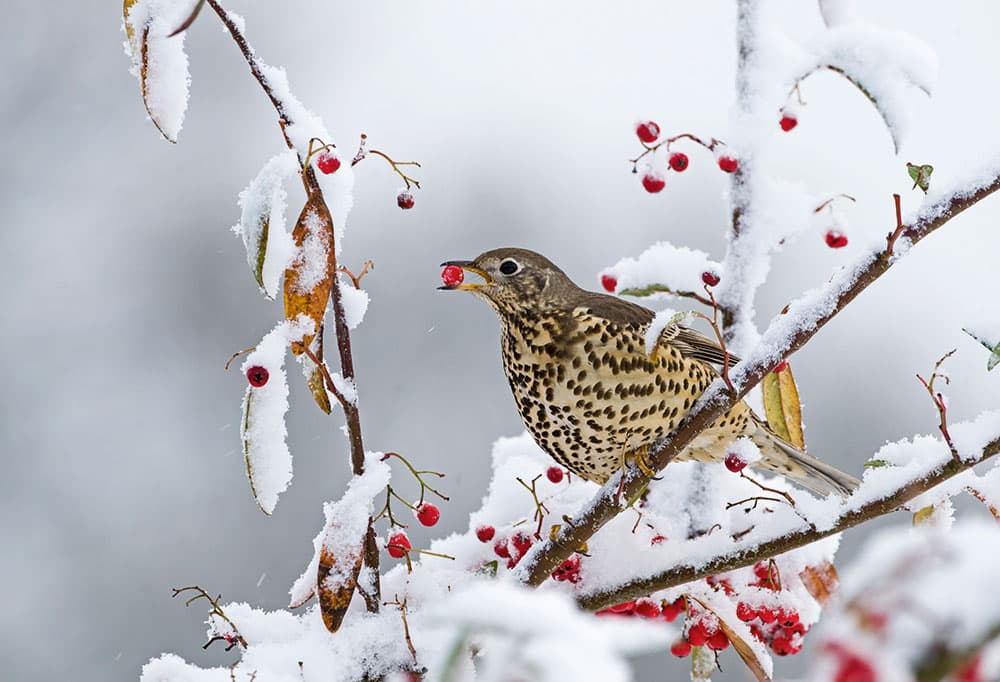
Mistle thrush (Turdus viscivorus) feeding on berries in garden full of snow in Norfolk. Nikon D3, 500mm, 1/200sec at f/7.1, ISO 25. Credit: David Tipling
Where to photograph garden birds
Photographing garden birds can be the perfect way to juggle a busy family life with photography. But even without time constraints there is an excellent advantage in being on the spot to make the most of good light, frost or snow. It takes thought and patience to do well, as there are many factors to take into account when planning a garden bird shoot.
Many of the techniques or opportunities I suggest here could be pursued in a local park where birds may be fed or are tame enough to approach. In the garden you need to decide where you are going to photograph from. Maybe a kitchen window can be opened, with a camouflage net or dark cloth used to help conceal your presence. You might have a garden shed that can act as a hide, or you could do what I often do and set the camera up with a remote trigger. This latter technique is not ideal for the obvious reason that you are focused on one spot, but it can be a useful option at times, and takes the least setting up and planning.
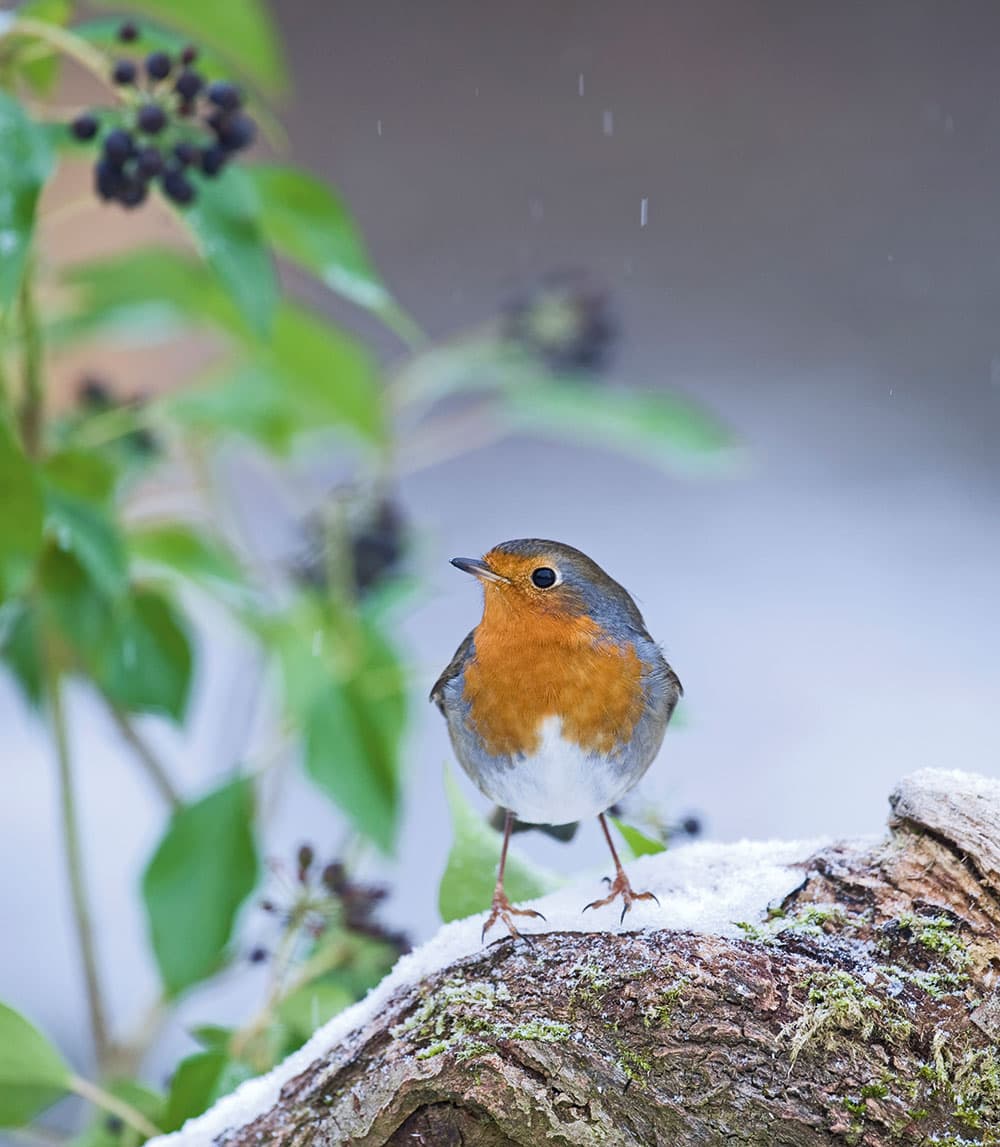
Robin (Erithacus rubecula) in winter garden, Norfolk. Nikon D3, 500mm, 1/125sec at f/5, ISO 500. Credit: David Tipling
Where you photograph from will depend on direction of light – both front and backlighting can be really effective for small birds. The sun’s direction will probably dictate which way you face and the background you have for your pictures. Creating a good backdrop is one of the biggest challenges. You may be lucky to have a big enough space to enable backgrounds to be controlled; avoiding unsightly branches or other extrusions that conflict with your subject. But if your garden is small, as mine is, then it’s worth considering a false backdrop by erecting a simple A-frame and attaching a dustsheet dyed your desired colour. Darker backdrops can work very well when shooting into the light, creating an interesting mood and helping to illuminate the translucent flight feathers of smaller birds.

Goldfinch (Carduelis carduelis) on teasel on a frosty winter’s morning in Kent. Kodak DCS Pro SLR/n, 500mm, 1/250sec at f/5.6, ISO 160. Credit: David Tipling
The next step is to try to lure birds to a perch. Small birds do not like feeling exposed, so having a bit of cover not too far away for them to dive into will encourage greater numbers. For the best results, place your perch between food sources – either a hanging feeder or bird table – and offer some nearby cover in the form of a shrub or tree. The food should remain out of shot but be close enough that your perch is the natural place on which to land, before reaching the food. I tend to have a number of feeders out when I’m not photographing. Then when I shoot I remove all except one of them, because this helps to create a queuing system encouraging more birds to perch.
Searching for attractive perches, such as a sprig of holly, a branch full of catkins, or a small log for a woodpecker, can be great fun. I often scour my local woods at different times of the year seeking out props that I feel will enhance a photograph. Try to keep your perch simple and have an idea of where you want the bird to land. It might take some experimentation, but that’s all part of the fun.
David’s top tips for garden bird photography
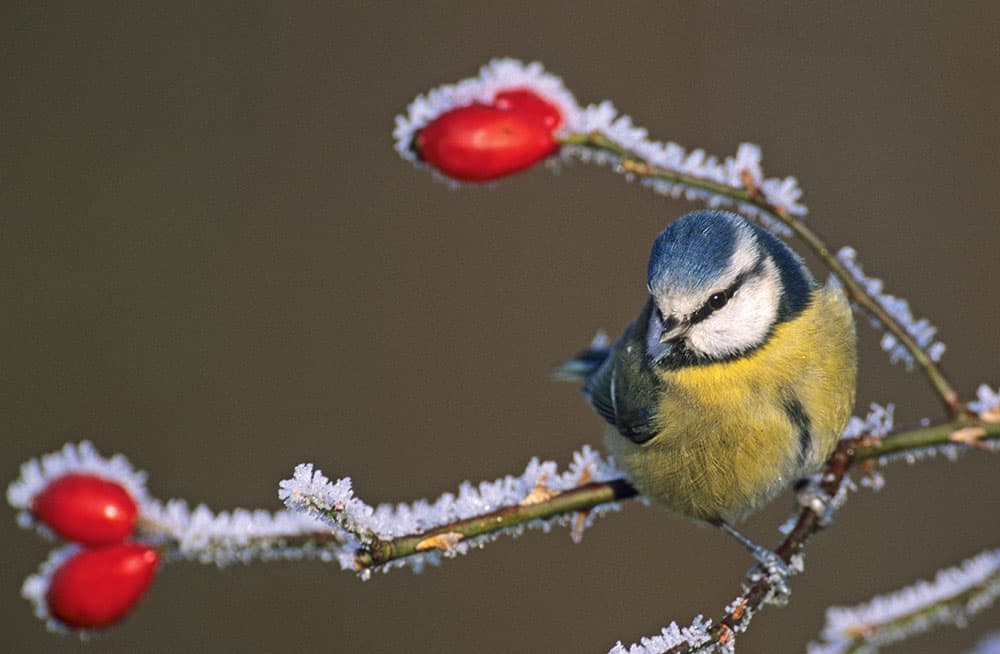
Credit: David Tipling
Plan for the weather
When snow or frost is forecast ensure your perches or any other props are in place the night before. If a heavy frost is on the cards try spraying a perch, plus any attractive berries or foliage, with water to emphasise the frosty look the next day.
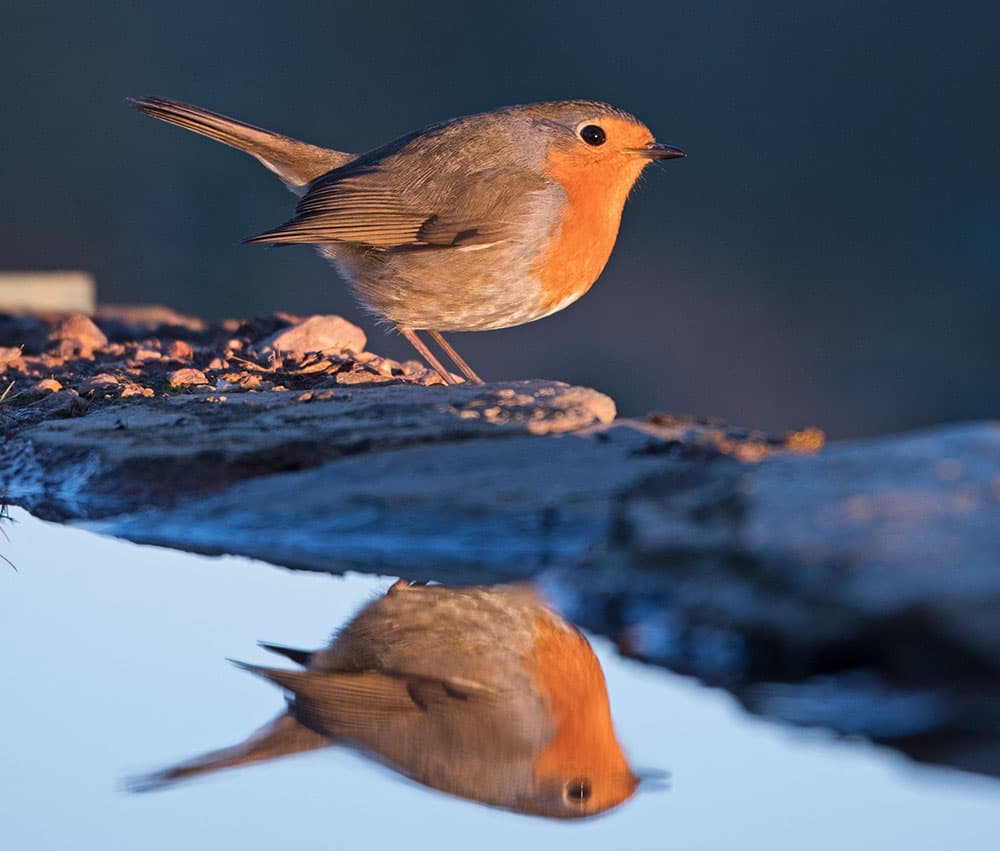
Credit: David Tipling
Create a pool
Garden birds like to drink and bathe, so try to create a natural-looking pool. A shallow tray from a garden centre sunk in the ground close to cover and decorated with moss and stones will make a photogenic set-up. But beware of attracting local cats that may try to make a kill.
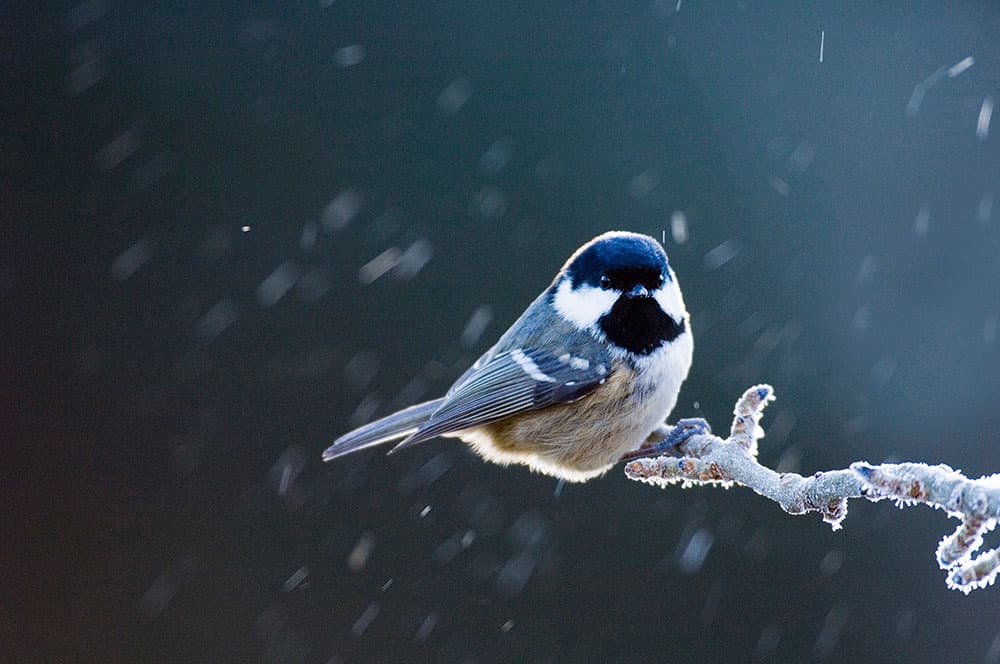
Credit: David Tipling
Get creative
When birds are bathing or perched in falling snow, a slower shutter speed will blur the water or streak the snow for creative results. Alternatively, freeze the action with a flash. Try shooting into the light when birds are bathing to make the water really sparkle.

Credit: David Tipling
Use seasonal props
Don’t confine your photography to the winter months. Seasonal props can be used throughout the year to give a sense of season. Sprigs of autumn leaves for that autumnal feel or, for the classic if rather clichéd Christmas scene, arrange some holly on a perch.

Credit: David Tipling
Food variety
The provision of different treats will help to add variety. Thrushes love apples, while tits, woodpeckers and nuthatches enjoy fat and peanuts; sunflower hearts are a good all-round food. Just make sure the food is invisible depending on the angle you’re shooting from.
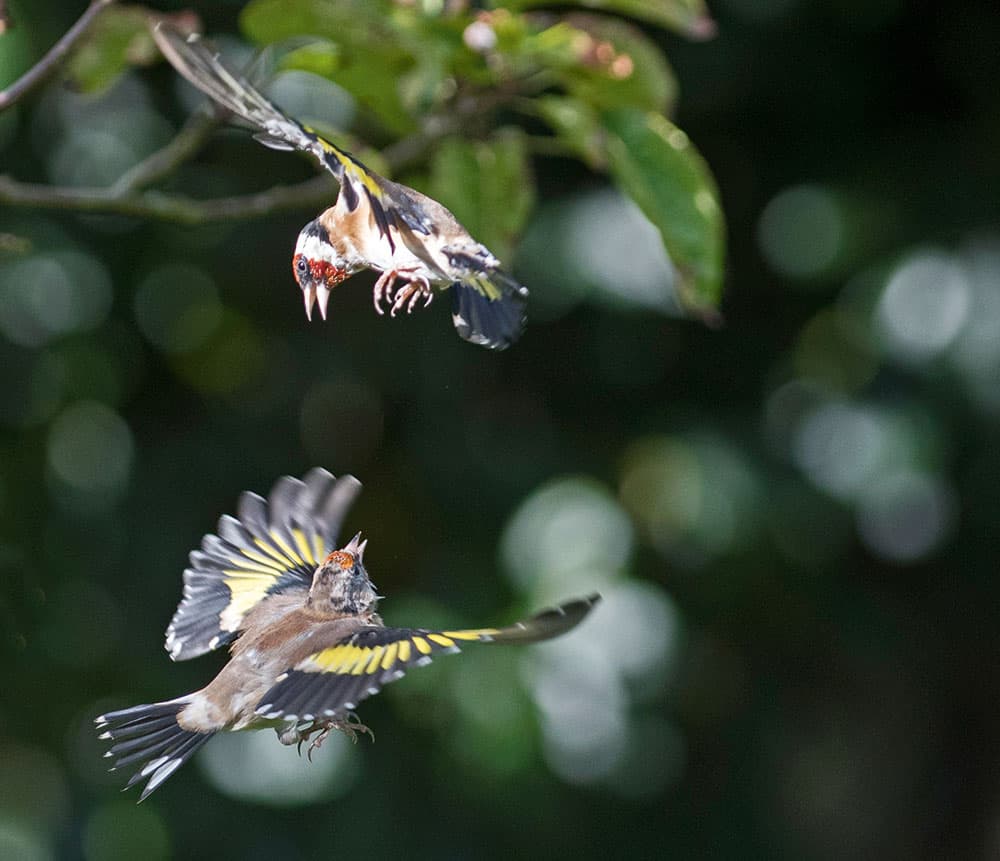
Credit: David Tipling
Don’t ignore your feeders
Some dynamic images can be captured as your garden visitors squabble and hover. Manually focus with the feeder just out of shot but in the same focal plane. At least 1/2,000sec is desirable if you want to capture the wings of small birds in flight, and fire away.
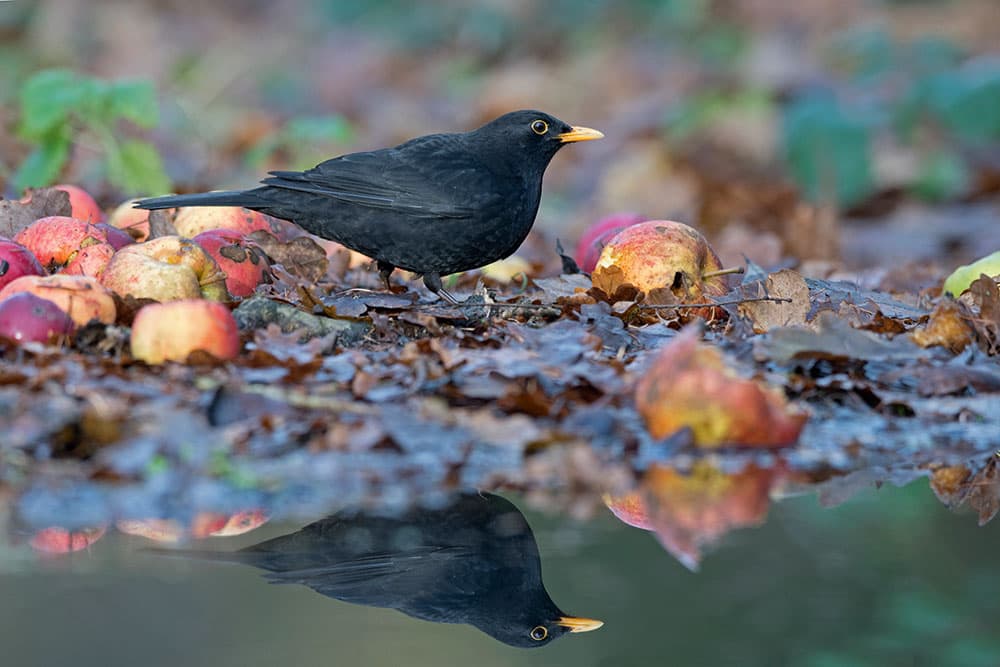
Blackbird (Turdus merula) male feeding on windfall apples in garden Norfolk. Nikon D500, 400mm, 1/80sec at f/4, ISO 500. Credit: David Tipling
Why it works
I have photographed blackbirds feeding on apples on numerous occasions, but this is my favourite shot. The closer you are to your subject’s level the more intimate the shot is going to feel, so with this image I stayed low but just high enough to get the perfect reflection. The apples were placed close to the water to enable this. The soft light on the black plumage, low angle, reflection and colour combination come together to make this one of my favourite garden bird shots.
Best kit for photographing birds
- Telephoto lens: Ideally, a lens with a reach of at least 300mm, with a focal length of around 500mm, will allow both decent image size and the ability to throw backgrounds out of focus.
- Clamps: Useful for holding canes and securing perches close to your bird feeder. Christmas tree stands are also handy for holding standing logs. I use a Yongnuo wireless trigger to fire my camera remotely from our kitchen when a bird lands on my perch.
- Pop-up hide: This is the most versatile way to conceal yourself from the birds and move position depending on light and season. There are lots of choices, including shooting blinds that can be adapted with a bit of camouflage net.
David Tipling is renowned for his artistic images of birds. He is the author or commissioned photographer for many books including the RSPB Guide to Digital Wildlife Photography and A Bird Photographer’s Diary, out this month. David leads tours to Shetland and Norfolk. See www.norfolkphotosafaris.com and www.davidtipling.com for more of david’s work.
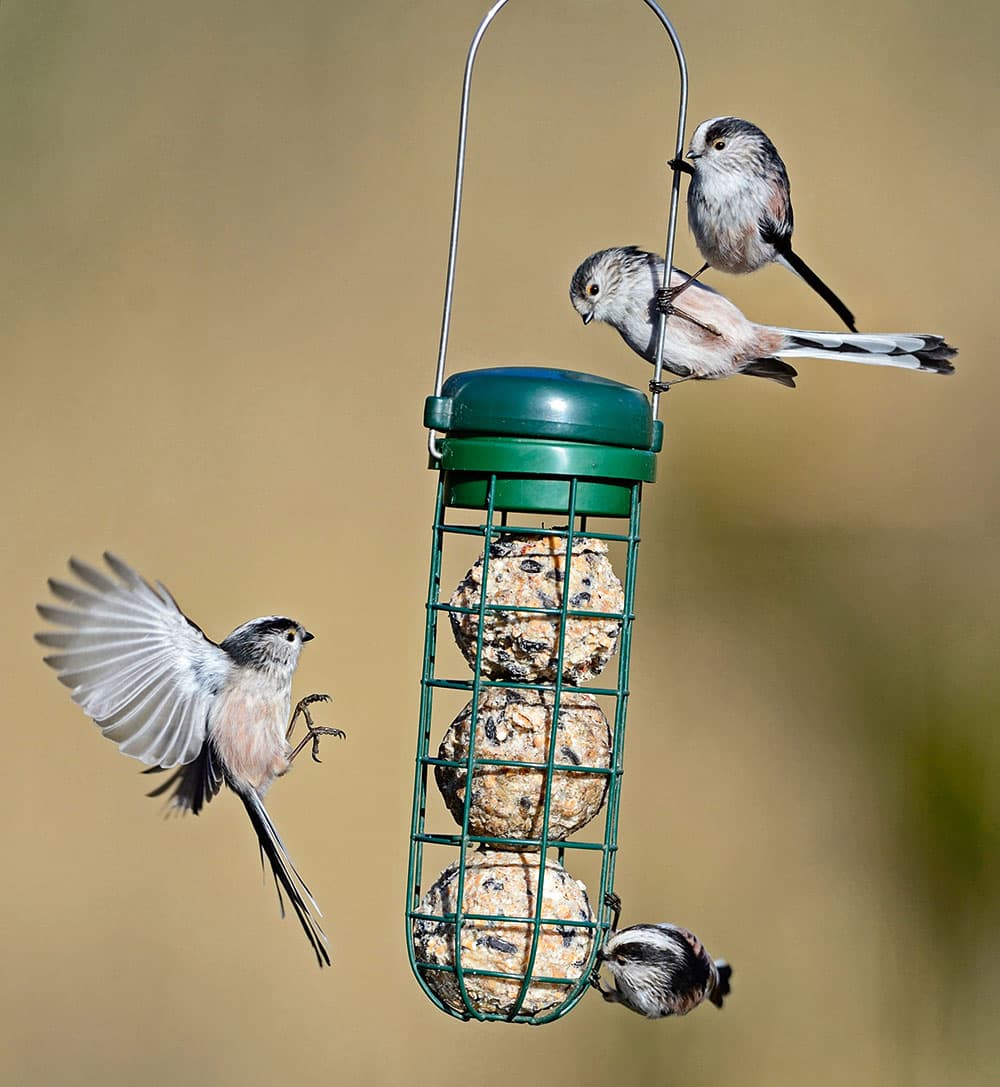
Long-tailed Tits (Aegithalos caudatus) on fat ball feeder in garden, Norfolk. Nikon D4, 400mm, 1/4000sec at f/4, ISO 500. Credit: David Tipling
This weekend January 27-29, marks the annual RSPB Big Garden Birdwatch, where anyone with access to a plot of land (whether it be a garden, roof terrace or local park) is encouraged to spend an hour counting the number of visiting species. For details about how to take part, visit www.rspb.org.uk.







